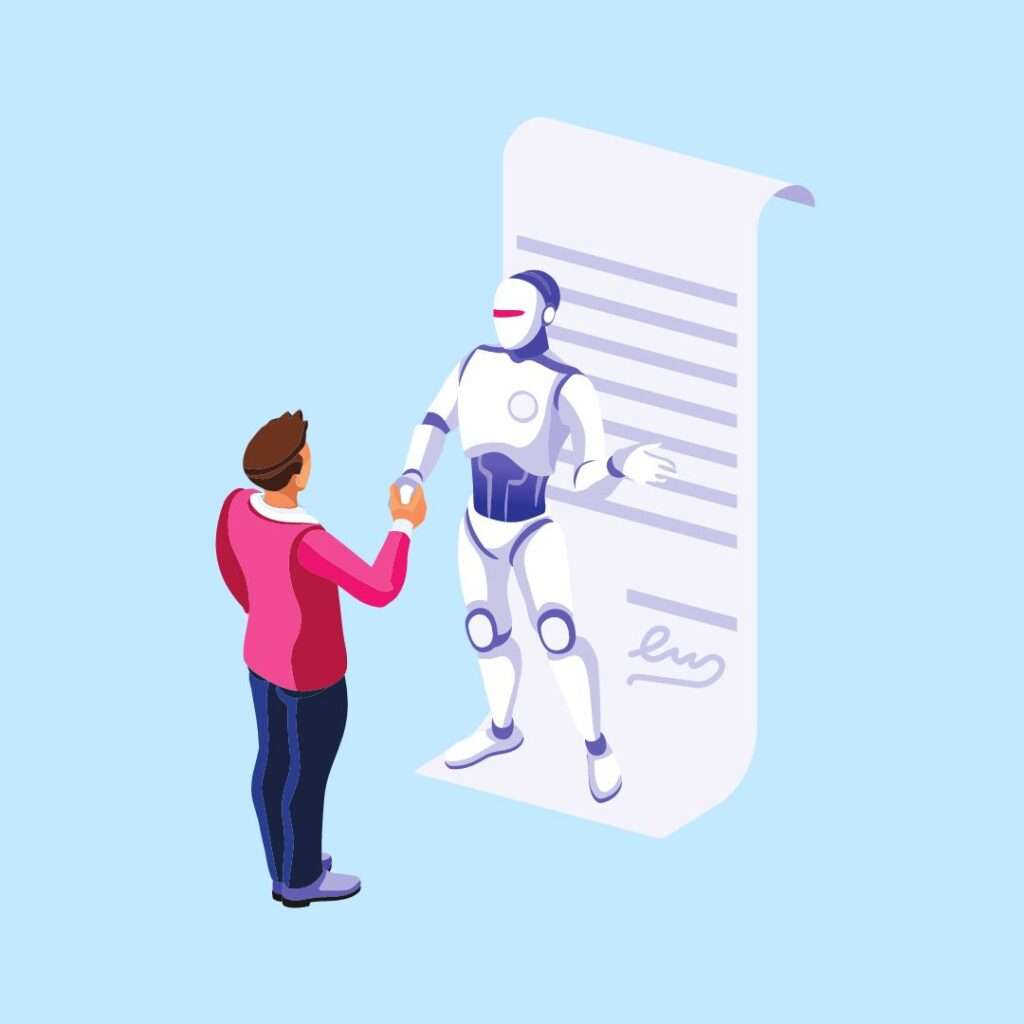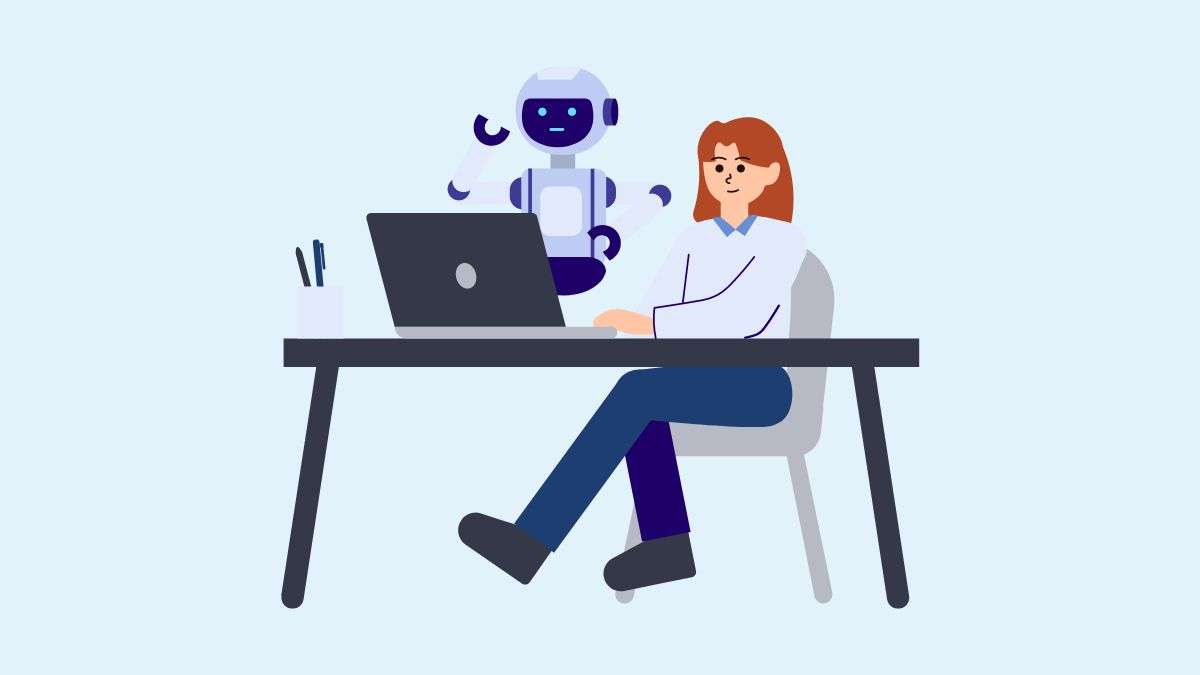Table of Contents
- The Interplay of Human Creativity and AI
- Human Creativity and AI: The Artistic Collaboration
- Tailoring Content to Reader Preferences: AI’s Transformative Role
- Ethical Questions on Originality and Authorship in AI-generated Content
- Conclusion: Navigating the Future of Artistic Collaboration with AI
The Interplay of Human Creativity and AI
Combining human creativity and AI is an exciting frontier in publishing. As AI systems grow more advanced, they have the potential to analyze massive amounts of data, identify patterns and connections that humans may miss, and rapidly generate content tailored to specific goals. When thoughtfully combined with human creativity, intuition, and emotional intelligence, this computational power could lead to groundbreaking new forms of literature.
Unlocking New Creative Possibilities
By teaming up human authors with AI tools, we open the door to creative possibilities that neither could achieve alone. The unstructured nature of human imagination can spark an idea. At the same time, an AI system can help organize, refine, and expand upon it by drawing connections to a vast trove of reference material. This symbiotic relationship allows for incredibly rich worldbuilding, multilayered narratives woven with themes and symbols, and a level of detail and consistency difficult for a sole human author to achieve.
Case Studies in AI-assisted Literature
Though still in its early stages, there are already some fascinating case studies that give us a glimpse of literature created with AI-human collaboration:
- A Japanese AI co-authored a short novel that nearly won a literary award.
- An AI trained in specific authors’ styles has helped human writers produce poems and short stories “in the spirit” of those famous writers.
- Text generation models have collaborated with human authors to create interactive gamebooks that adapt to reader choices.
As the technology continues advancing, we will likely see increasingly sophisticated applications. For instance, AI tools may one day help authors dynamically adjust plot threads, world details, or character arcs in response to real-time reader data to optimize engagement.
Challenges to Overcome
Despite the enormous potential, effectively merging human creativity and AI does come with substantial challenges. Ethical issues around copyright, attribution, and creative ownership must be addressed. There are also technical hurdles, like reducing dataset bias and improving context handling in natural language models.
Finally, the collaboration process introduces new complexities to the author’s creative flow. With care, openness, and responsible innovation, the publishing world can navigate these issues to unlock amazing new literary possibilities.
Human Creativity and AI: The Artistic Collaboration
As AI systems become increasingly capable of generating creative works, questions around copyright and ownership grow more complex. When an AI system is trained on vast datasets of existing works, to what extent does the output reflect the creativity of the original human authors versus the ingenuity of the AI system designers? This poses challenges in determining appropriate attribution and compensation.
Exploring Legal Ambiguities
Current copyright laws were not designed with AI systems in mind. There is no clear precedent for handling ownership of AI-generated works. If an AI system creates a novel that resonates deeply with readers, who deserves recognition – the company that designed the system, the engineers who trained it, or neither?
Several high-profile examples have already demonstrated some of these ambiguities. In 2018, an AI system named AICAN produced an abstract digital artwork exhibited and sold at an art auction. Debate erupted around whether this constituted real creativity or mere imitation by the algorithm.
Navigating Ethical Implications
As AI increasingly mimics human creativity, ethical implications around attribution and compensation must be addressed. If AI systems can produce novels, songs, or films based on analyzing vast troves of existing works, this could negatively impact professional creative careers that rely on copyright protections.
However, some argue that AI-generated works require human supervision, guidance, and judgment. The outputs may contain biases or lack coherence without human curation. More nuanced models around attribution and profit-sharing may need to emerge in these collaborative scenarios.
Rethinking Creative Ownership
The advent of AI creativity will require rethinking fundamental notions of creative ownership. If an AI system can ingest the entirety of Shakespeare’s works and generate a new play mimicking his style, does the result constitute a meaningful new work of authorship?
Striking the right balance between protecting original creators and encouraging AI innovation will raise challenging questions without clear solutions. Ongoing dialogue among technology leaders, lawmakers, artists, and ethicists will be needed to develop fair and ethical policies around attribution and ownership of AI-generated creations.
Tailoring Content to Reader Preferences: AI’s Transformative Role
AI is poised to transform the publishing industry by enabling content creators to understand better and cater to reader preferences. As AI algorithms analyze vast troves of reader data—from consumption habits to emotional reactions—they can identify patterns and correlations that reveal how different audiences engage with content.
Analyzing Reader Behavior to Inform Content
Leveraging reader analytics, AI systems can discern nuances about target demographics such as preferred writing style, subject matter interests, average attention span, and more. These insights empower publishers to make data-driven content development and optimization decisions to boost reader satisfaction.
For example, AI could determine that readers of historical non-fiction prefer short, succinct paragraphs interspersed with pictures and captions. Writers and editors can then tailor upcoming manuscripts to match those preferences.
Generating Personalized Content
AI also shows promise for automated content generation, from personalized news feeds to customized novels. Algorithms can synthesize key data points about an individual—from location to past reading choices—to produce one-of-a-kind content.
A sci-fi fan might receive AI-generated book recommendations with unique plot points and characters tailored to their unique tastes. Such personalization could make content more relatable and engaging to readers.
Weighing Ethical Considerations
However, this reader-centric approach also introduces ethical questions regarding privacy and consent. Does personalized content cross the line into manipulation? How can reader autonomy be safeguarded?
The publishing industry must establish best practices around transparency and user control. Readers should be fully informed when AI is used to enhance content and have access to opt-out if desired.
Overall, the possibilities are intriguing, but due diligence around ethics is vital as AI becomes further enmeshed in publishing.
Ethical Questions on Originality and Authorship in AI-generated Content
The rise of AI-generated content raises critical ethical questions about originality and authorship. As AI systems become increasingly capable of producing creative works, we must grapple with defining “originality” and “authorship” when AI is involved.
Challenges in Defining Originality
Traditionally, originality refers to novel, innovative content that is not copied from others. However, AI models like GPT-4 (and its subsequent updates) are trained on vast datasets of human-created content. This raises questions around whether output generated by these models can ever be considered “original”. Some argue that AI-generated content inevitably recycles and remixes existing works, lacking true originality.
Others contend that AI systems can still produce content that is novel and innovative enough to meet the bar for originality. Just as human creators are influenced by what came before them, AI models create by building on their training data. The debate continues around finding an appropriate threshold to define original originality in AI-generated content.
Impact on Notions of Authorship
The involvement of AI also profoundly impacts traditional notions of authorship in creative works. Typically, the “author” is conceived as the human creator of a literary work. However, AI-assisted or AI-generated content blurs the lines around sole authorship.
For instance, who holds authorial credit when an AI system generates a poem after being prompted by a human? Does authorship belong to the AI system’s original programmers rather than the end-users providing prompts? Resolving these questions will be crucial as AI-human collaboration creates abundant co-created content.
Intellectual Property Implications
The authorship debate also raises intellectual property concerns. Copyright law centers around the concept of an author as the originator of creative work. If AI systems can produce original literary content, should they be able to hold copyright? Some argue AI lacks the intentionality and creativity required for authorial rights.
However, companies are already moving to copyright or patent AI-generated content to protect commercial interests. Legally, codifying the rights of AI “authors” would be a complex undertaking. There are also calls for any financial benefits of AI-created works to be shared collectively rather than owned privately.

As AI begins reshaping artistic production, we must thoughtfully examine the ethical dimensions around originality and authorship. Engaging in proactive dialogues will allow us to navigate this shifting landscape responsibly.
Conclusion: Navigating the Future of Artistic Collaboration with AI
As we have explored throughout this write-up, the collaboration between human creativity and AI’s computational power holds enormous potential in the publishing industry. By combining strengths, groundbreaking literary works that captivate readers’ imaginations can emerge. However, this evolving landscape also surfaces complex questions around copyright, authorship, and creative ethics that require thoughtful navigation.
Key Insights on the Symbiotic Human-AI Relationship
- AI tools can analyze massive amounts of data to discern subtle patterns in reader preferences, allowing more tailored content creation.
- Humans provide the creative spark, intuition, and emotional intelligence that AI lacks to inject heart and meaning into generated content.
- Collaborative works that leverage human ingenuity and AI’s capabilities can produce remarkably inventive published pieces.
As technology advances rapidly, the lines between human authorship and machine contribution may blur further. We must develop ethical frameworks and best practices around attribution and intellectual property.
Considering the Ethical, Legal, and Creative Implications
What does being an author in this technologically assisted creative process mean? How should copyright law and ownership conventions adapt? These questions require extensive debate as we move forward. The answers may differ across genres, from journalism to fiction writing. Ongoing dialogue between technologists, artists, lawmakers, and the public is needed to align innovations with societal values. We should also remain mindful of potential downsides if the technology is misused, from amplified disinformation to formulaic content lacking originality. Maintaining human agency in evaluating AI output is critical rather than blindly generating at scale.
Exploring This Shifting Landscape Together
Rather than fearing AI’s role in artistic collaboration, we can approach it as an opportunity that complements human imagination. If guided by ethical considerations and compassion for the human condition, these tools hold the potential to expand our creative boundaries.
We must openly discuss experiences with AI-assisted creation, learn from failures and successes, and co-create visions for integrating these technologies responsibly. Our shared future in publishing will depend significantly on the wisdom with which we navigate this terrain.
